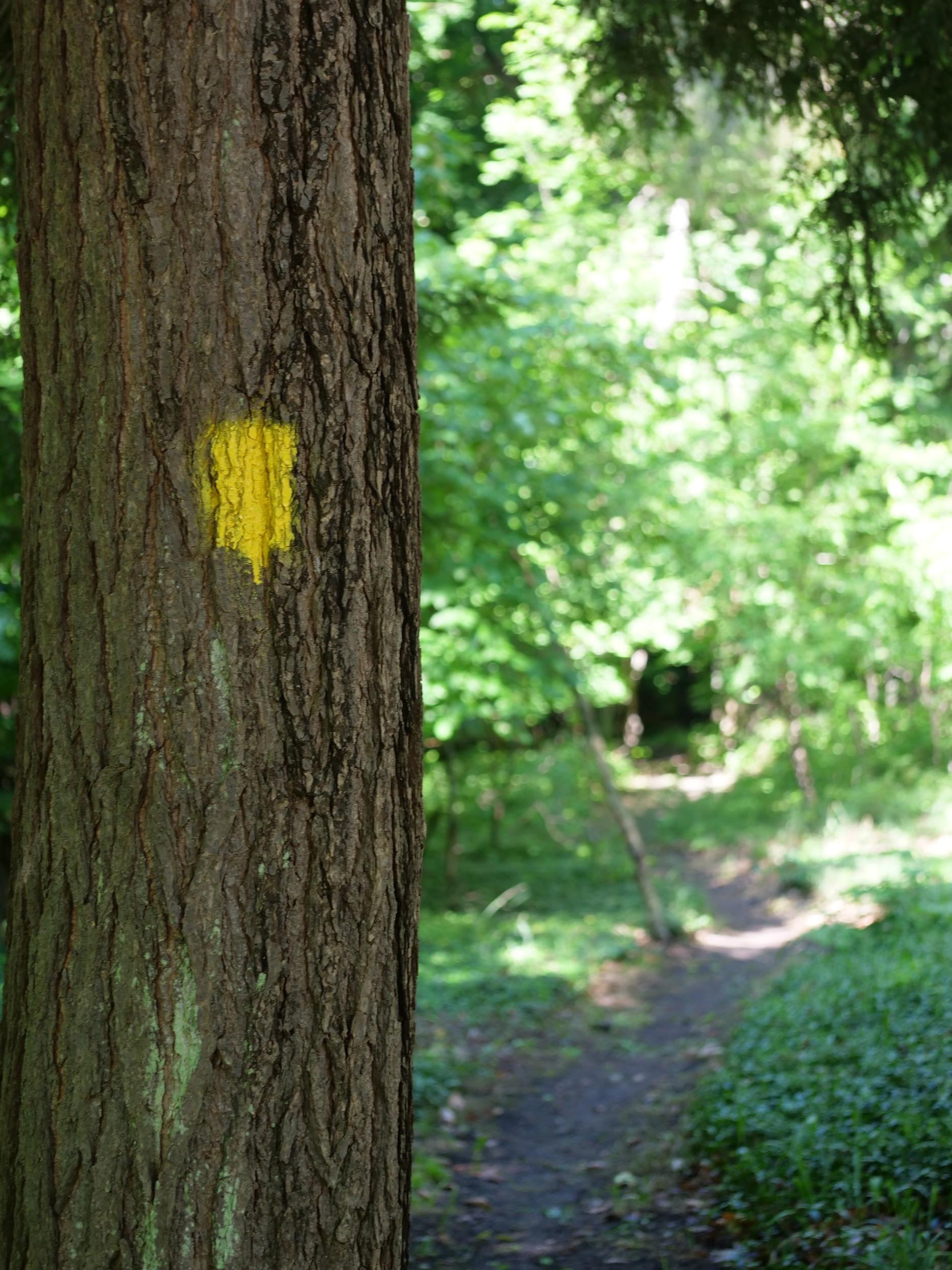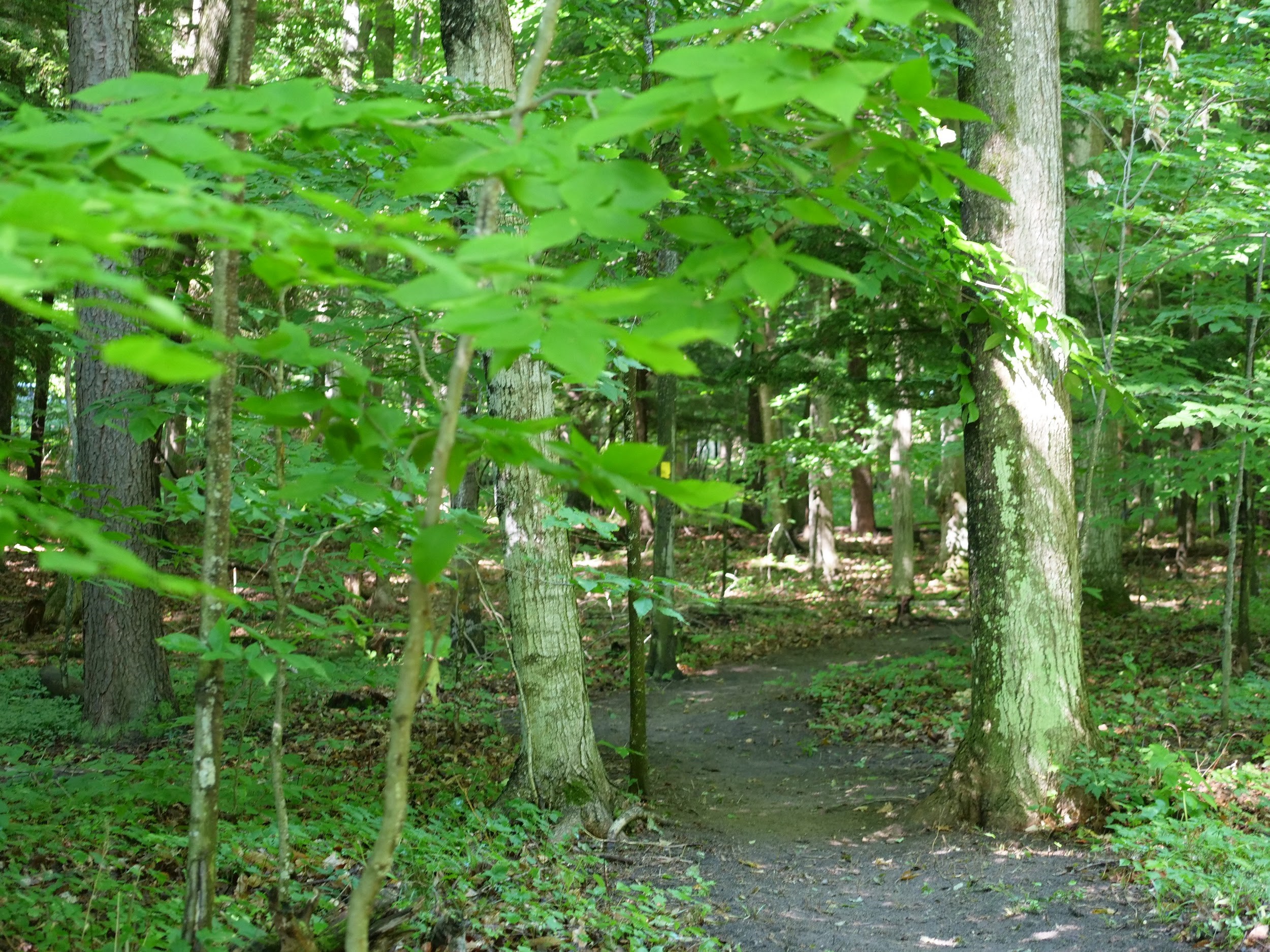The Lowering of Crystal Lake: Its Impact on the CSA 150 Years Later
Tragedy or Comedy?
By Peter Sznewajs
Have you ever wondered why Crystal Lake’s west shore has long, sandy beaches compared to the rest of the lake or other inland lakes in Northwest Michigan? Or why when entering Beulah, there is a large hill to get downtown? Thank Archibald Jones for the odd commodities that Crystal Lake has to offer.
 Dr. Stacy Leroy Daniels portrayed Archibald Jones at the CSA Arts & Crafts Fair July 26, 2023.Crystal Lake’s story is one of lore. Much of its history, especially predating World War II, is undocumented, creating a circus of rumors, skeptics, and conspiracy theories. However, chemical-environmental engineer and former University of Michigan professor Dr. Stacy Leroy Daniels devotes his life to sharing a particular facet of the region's history: the lowering of Crystal Lake.
Dr. Stacy Leroy Daniels portrayed Archibald Jones at the CSA Arts & Crafts Fair July 26, 2023.Crystal Lake’s story is one of lore. Much of its history, especially predating World War II, is undocumented, creating a circus of rumors, skeptics, and conspiracy theories. However, chemical-environmental engineer and former University of Michigan professor Dr. Stacy Leroy Daniels devotes his life to sharing a particular facet of the region's history: the lowering of Crystal Lake.
Spending time around Frankfort and Crystal Lake, Daniel’s presence stands out in the town. He sports a long, white beard, attributed to Archibald Jones, holds booths at local art fairs, including our CSA Art Fair, and was this year’s Frankfort parade’s Grand Marshal. He is the author of The Comedy of Crystal Lake, a two-part novel covering the lake’s lowering and the biography of Archibald Jones.
On July 13, Daniels held a town-hall event at Benzie Historical Society, telling the story of Archibald Jones, the man responsible for lowering Crystal Lake in 1873. Daniels debates whether the lake’s lowering was a “tragedy” or a “comedy,” telling listeners at his lecture “it’s up for you to decide.” However, the consequences were unintentional. Jones planned to build a canal through a temporary dam, which is now the Crystal Lake outlet near Mollineaux Road. Its goal was to connect Crystal Lake to Lake Michigan in hopes of creating a pathway for imports to reach further into Benzie County, increase tourism, and build a more vibrant economy.
Ultimately, Jones’ plan failed. Whitecaps washed out the temporary dam, lowering the lake by 17 to 20 feet and creating the largest inundation from an inland lake in the country, until the Edenville Dam disaster in Midland, Michigan in 2020. Crystal Lake lost 56 billion gallons of water, approximately 2.5 percent of its area and volume.
Scholars debate whether the lowering was a “tragedy” or “comedy” for the lake. The “tragedy” argues that the destruction of the passageway hurt the region's economy, but this is unclear and dubious. The “comedy” is what did occur, and in part, helped the Assembly and local communities come to fruition.
The lowering of Crystal Lake allowed for 1,000 new cottages to be built around the east and west shore of the lake and another 21 miles of sandy front land. Today, the east shore of Crystal Lake includes Beulah, a small but vibrant community filled with summer houses and great local businesses. For the CSA and west shore, the lowering of Crystal Lake allowed for long beaches filled with beautiful cottages that define many of our summer experiences.



 n a rich place for painters, actors, singers, musicians, composers, photographers, and writers who not only pursue these endeavors in the summer months but professionally as well.
n a rich place for painters, actors, singers, musicians, composers, photographers, and writers who not only pursue these endeavors in the summer months but professionally as well. Safety is one of our primary concerns at the CSA - M22 runs right through our grounds, and most roads are only wide enough for one car to drive along at a time. Those visiting the Assembly have always been encouraged to be cautious whether they’re driving or walking; but as the 2022 season rolls in, our Maintenance Department headed by Tom Mauer has worked tirelessly to make things a little safer for all of us through their renovation and reconstruction of Assembly walking paths.
Safety is one of our primary concerns at the CSA - M22 runs right through our grounds, and most roads are only wide enough for one car to drive along at a time. Those visiting the Assembly have always been encouraged to be cautious whether they’re driving or walking; but as the 2022 season rolls in, our Maintenance Department headed by Tom Mauer has worked tirelessly to make things a little safer for all of us through their renovation and reconstruction of Assembly walking paths. traffic. Among the paths slated for renovation are the Carver Crescent to South Shore trail and the stairway down the hill to Lake Michigan. His hopes are that by making these trails safer and more accessible for those on foot, we can keep Assembly patrons out of harm’s way while also giving them scenic, enjoyable trails to walk along.
traffic. Among the paths slated for renovation are the Carver Crescent to South Shore trail and the stairway down the hill to Lake Michigan. His hopes are that by making these trails safer and more accessible for those on foot, we can keep Assembly patrons out of harm’s way while also giving them scenic, enjoyable trails to walk along.